The Montessori curriculum for preschool-aged children at Natura Montessori Academy is carefully designed to cater to the holistic development of each child, encompassing cognitive, physical, social-emotional, spiritual, and psychological aspects. When entering the classroom, you will observe children engaged in independent activities, as well as collaborative efforts among peers. While individual work is emphasized for developmental reasons, small group activities are integrated throughout the day to encourage social interaction and cooperation.
There are five core areas of the curriculum:
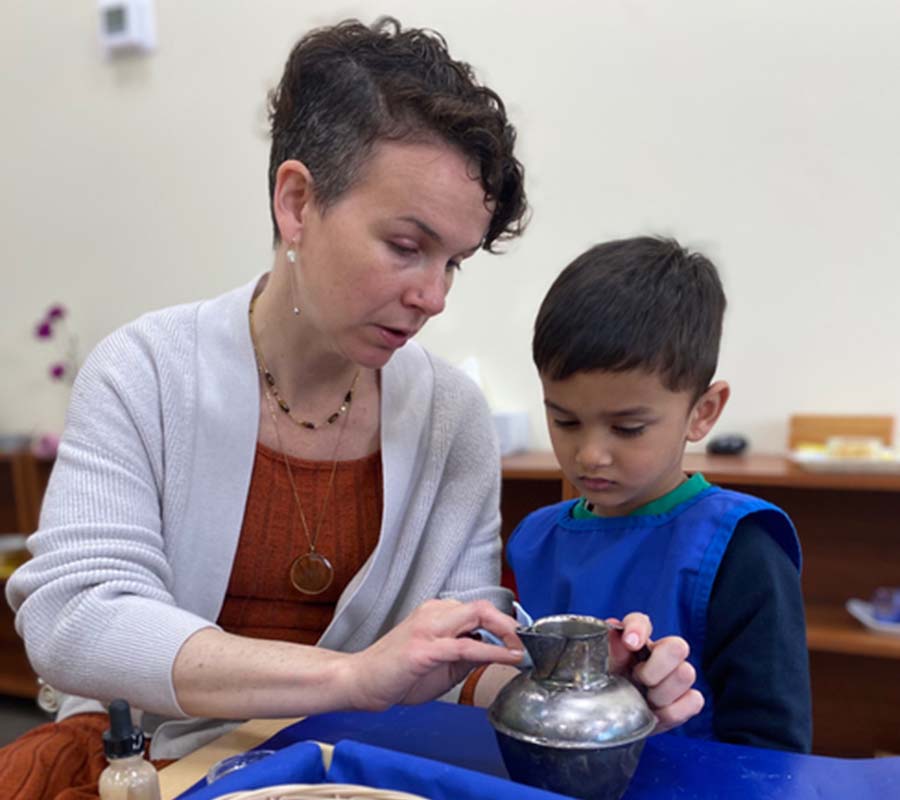
Practical Life:
Purpose: Practical Life activities help children develop everyday life skills, refine their fine and gross motor skills, and promote independence. They also learn how to take care of themselves, the environment and other members in our society. We emphasize on character development of children and teach them grace and courtesy lessons such as saying please and thank-you, being kind to others, listening without interrupting, and resolving conflicts peacefully.
Example of materials and activities include:
- Pouring,
- spooning,
- dressing frames,
- polishing,
- sweeping.
Sensorial:
Purpose: Children develop cognitive abilities and perceive the world through their senses - Visual, Tactile, Auditory, Gustatory and Olfactory. They learn how to describe , associate and name their experiences. For example, rough and smooth, perceived through touch/tactile sense. Sensorial materials help children classify their surroundings and create order. It lays the foundation for learning by developing the ability to classify, sort, and discriminate—skills necessary in math, geometry, and language.
Example of materials and activities include:
- Pink Tower,
- Brown Stair,
- Color Boxes
- Knobbed Cylinders
- Geometric solids
- Trinomial Cube
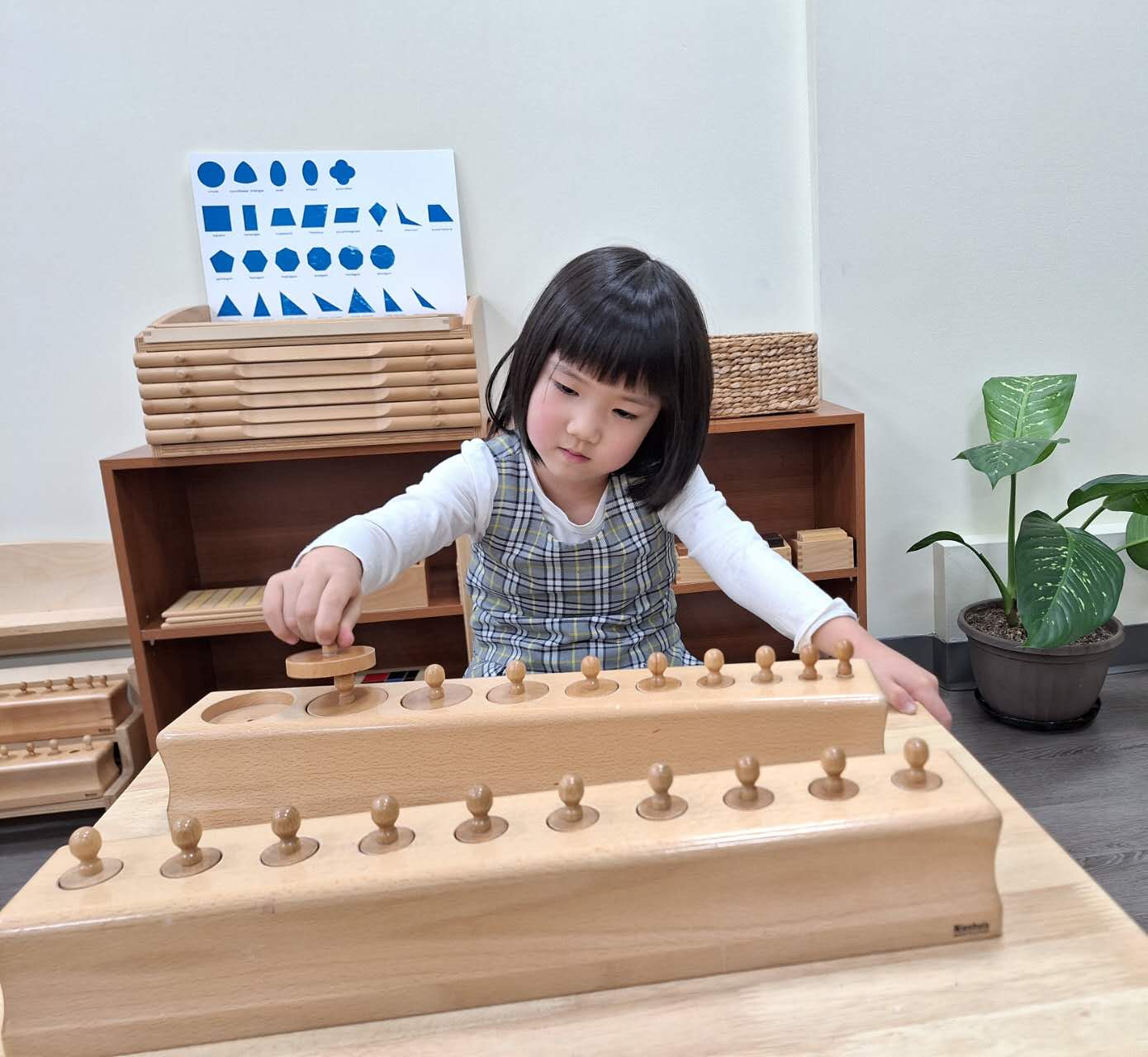
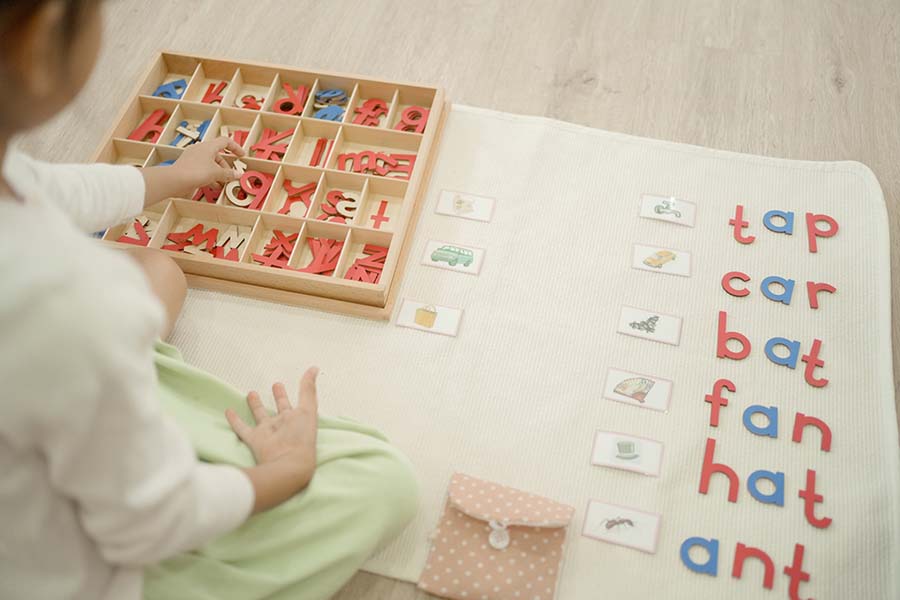
Language:
Purpose: Language development is an important aspect of Montessori education. Children acquire vocabulary and develop the skills needed for writing and reading. The first skill taught is writing, which is a precursor to reading. Using hands-on materials, children learn the phonetic sounds of all alphabets, how to combine sounds into words, how to make sentences, and how to use a pencil. Once these skills are mastered, children learn to read spontaneously.
Example of materials and activities include:
- Sandpaper Letters
- Moveable Alphabet
- Three Part Cards
- Metal Insets
- Vocabulary
Mathematics:
Purpose: Mathematics is an abstract subject. Through hands-on activities, children learn to identify numerals and match them to their quantity. They learn the decimal system and understand place-value and the base -10 system. They also learn the different operations: addition, subtraction, multiplication, and division. The children explore patterns in the numbering system. With an exploratory approach, children do more than just memorize math facts; they gain a firm understanding of the meaning behind them.
Example of materials and activities include:
- Number and counters,
- spindle boxes,
- Hanging Bead Stair,
- Teen Boards,
- Hundred Boards.
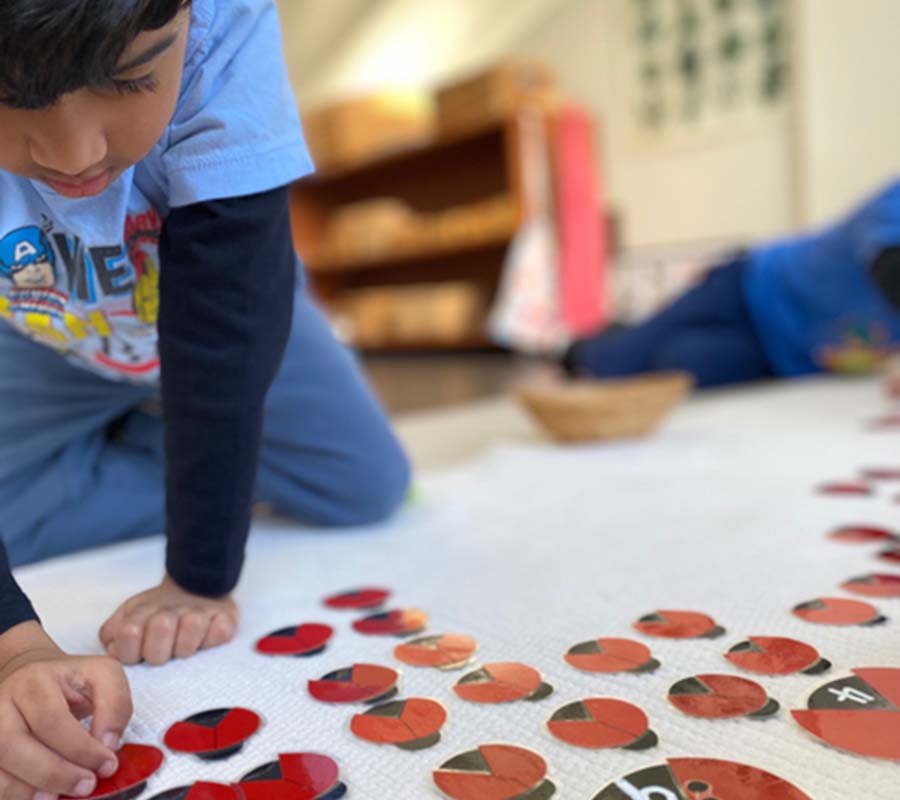
Cultural Studies (include: Geography, History ,Science, Botany, Zoology, and Art & Music)
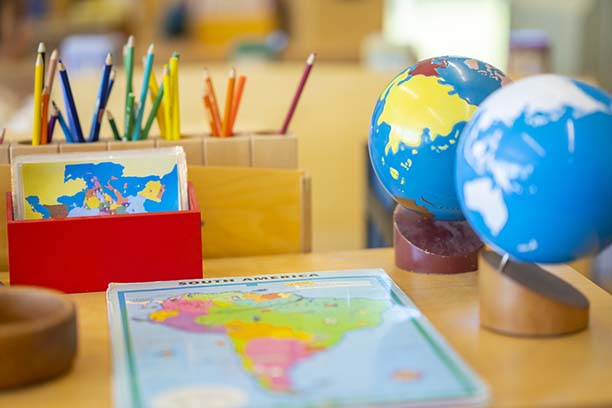
Purpose: Dr. Montessori uses a term called, “Cosmic Education”. It essentially encompasses science, social studies, history, geography, and biology in the Cultural curriculum. Children learn about their own community and the world around them. Discovering similarities and differences among people and places helps them develop an understanding and appreciation of the diversity of our world, and a respect for all living things. We focus on “Peace Education” and help children understand the importance of living in harmony and be respectful of other members in our society.
Example of materials and activities include:
- Continent globes,
- Map Cabinet,
- Botany Cabinet,
- Life Cycle Puzzle and activities.
